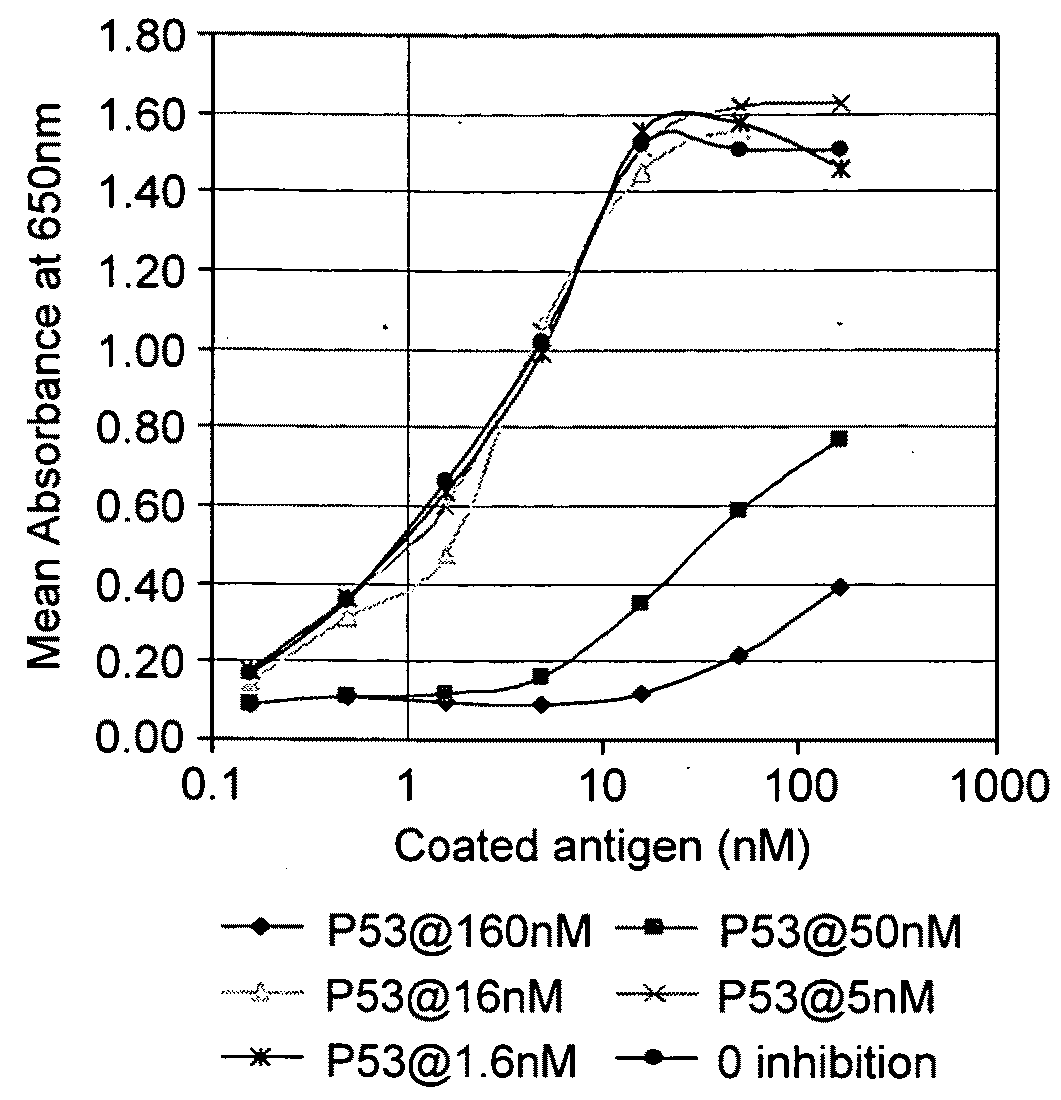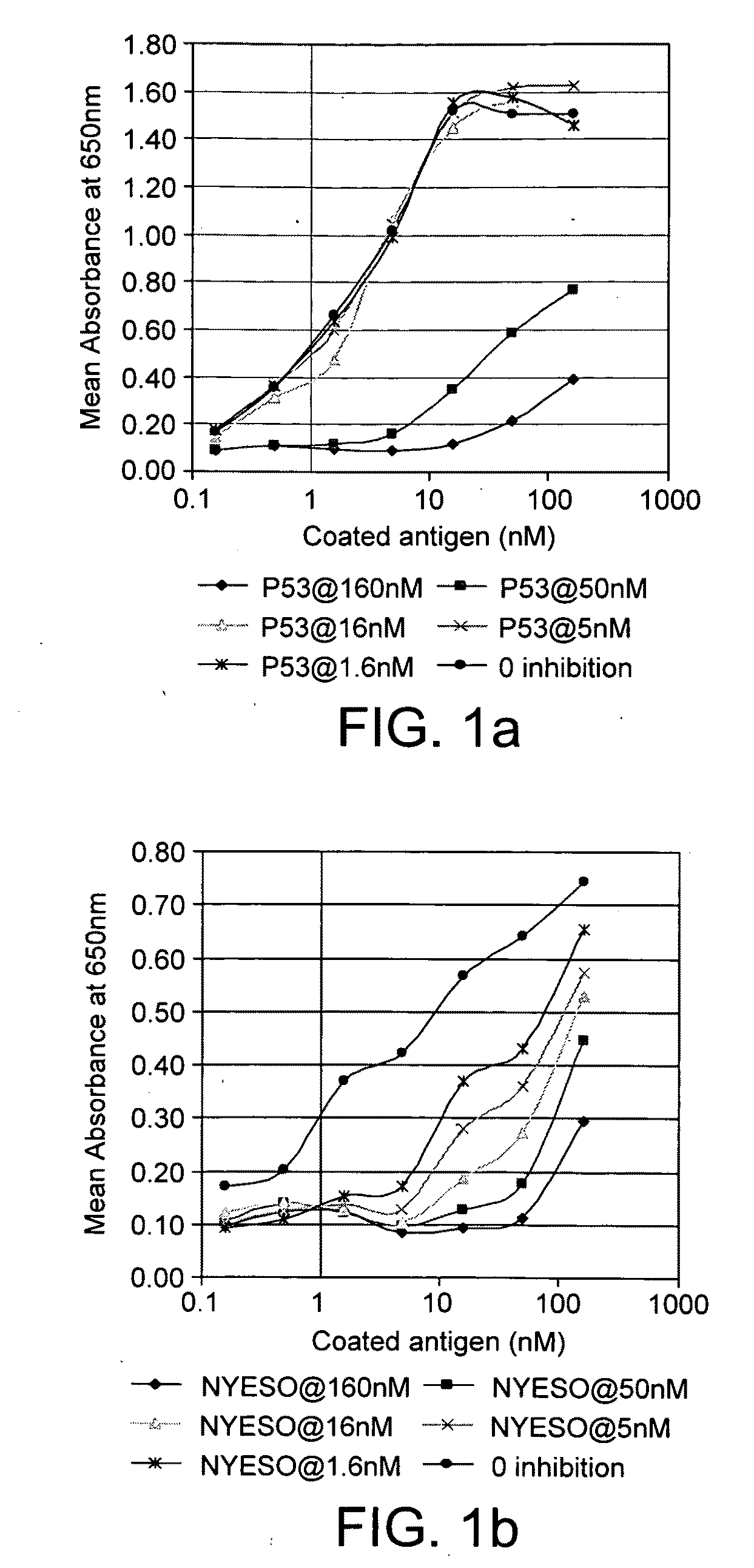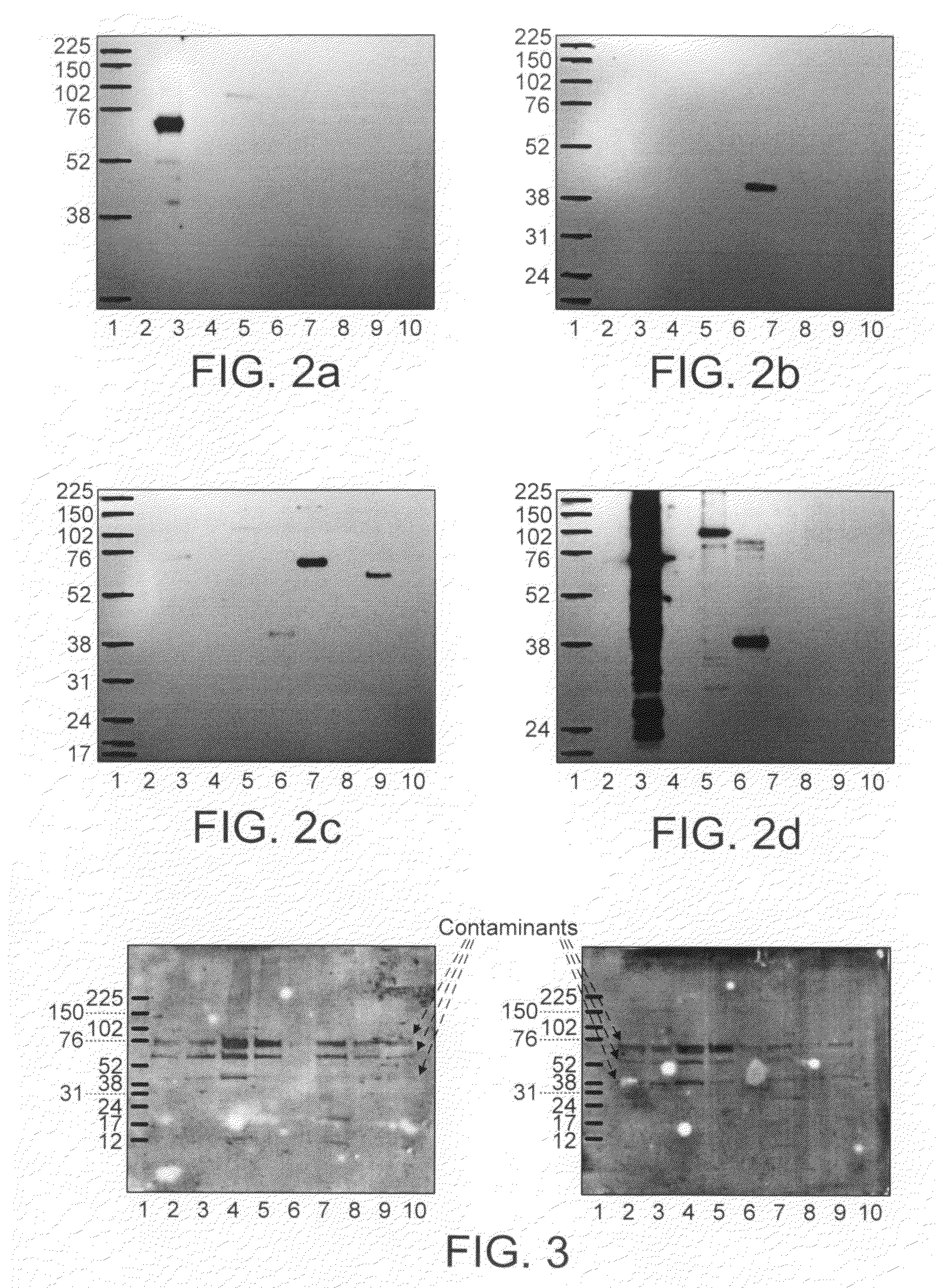Calibrator For Immunoassays
a technology of immunoassays and calibrators, applied in the field of immunoassays, can solve the problems of unable to guarantee the true representation of variation detected, unable to identify suitable calibrators, and unable to detect assay variation
- Summary
- Abstract
- Description
- Claims
- Application Information
AI Technical Summary
Benefits of technology
Problems solved by technology
Method used
Image
Examples
example 2
Demonstration of Antigen Specificity of Autoantibodies in Human Fluids
[0129]Patient fluids were screened in a standard autoantibody assay at a 1 in 100 dilution (in HSBT) to determine those that contained autoantibodies against a selected antigen (Table 1). FIGS. 1a &b show examples of inhibition of binding of the autoantibodies in two different pleural fluids to two different antigens by their pre-incubation with that antigen in solution. Thus, the inventors have shown that the selected antigens measure autoantibodies which are specific for that particular tumour associated antigen.
[0130]As an additional demonstration of the specificity of autoantibodies in pleural fluids for tumour associated antigens, Western Blots were performed on the recombinant antigens used as capture agents in the autoantibody assay. These carried out according to standard methodologies described in the literature and were probed with pleural fluids selected as calibrators. The results can be seen in FIG. 2...
example 3
Antigen and VOL Titrated and Fluids Titrated
[0133]The possibility of using patient fluids as a calibration system was initially investigated using a double titration system, in which assay plates were coated with titrations of both antigen and VOL (see Table 2a). Antigens and VOL were allowed to adsorb to the plate for a minimum of 48 hours after this time the plate was washed and blocked for 90 min with PBS containing casein (0.1% w / v), NaCl (0.5M) and Tween 20 (0.1% w / v). During the blocking incubation a set of patient fluid calibrator titrations (in HSBT) were prepared in tubes. Following removal of the blocking buffer, these were added to the empty plate as shown in Table 2b and incubated for 90 min. The remainder of the assay was performed as described in materials and methods.
TABLE 2plate and assay layout of Method 2 calibration where fluid and antigen were both titrated across the plate.1234567891011122aA0.5 nM A1.6 nM A5 nM A16 nM A50 nM A160 nM A0.5 nM A1.6 nM A5 nM A16 nM ...
example 4
Antigen and VOL at a Static Concentration and Fluids Titrated
[0137]The inventors found this method produced the most useful data sets in relation to the autoantibody assays because it reduced the amount of data being collected to a level that could easily be produced reproducibly and analysed efficiently. By reducing the amount of wells being assayed per calibration run, it was also possible to run control samples concurrently on the same plates as the calibrator curves. It had also been demonstrated that serum autoantibody measurements at 160 and 50 nM gave the most useful information and that calibration curves measured against these two antigen concentrations provided the greatest dynamic range for calibration. It was therefore decided to investigate this method in multiple settings.
[0138]Initial experiments were conducted to determine the reproducibility of patient fluids against seven different antigens. These assays were performed on plates coated with antigen at 160 nM and 50...
PUM
 Login to View More
Login to View More Abstract
Description
Claims
Application Information
 Login to View More
Login to View More - R&D
- Intellectual Property
- Life Sciences
- Materials
- Tech Scout
- Unparalleled Data Quality
- Higher Quality Content
- 60% Fewer Hallucinations
Browse by: Latest US Patents, China's latest patents, Technical Efficacy Thesaurus, Application Domain, Technology Topic, Popular Technical Reports.
© 2025 PatSnap. All rights reserved.Legal|Privacy policy|Modern Slavery Act Transparency Statement|Sitemap|About US| Contact US: help@patsnap.com



